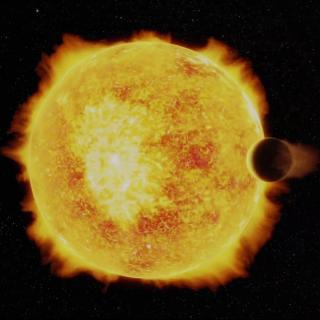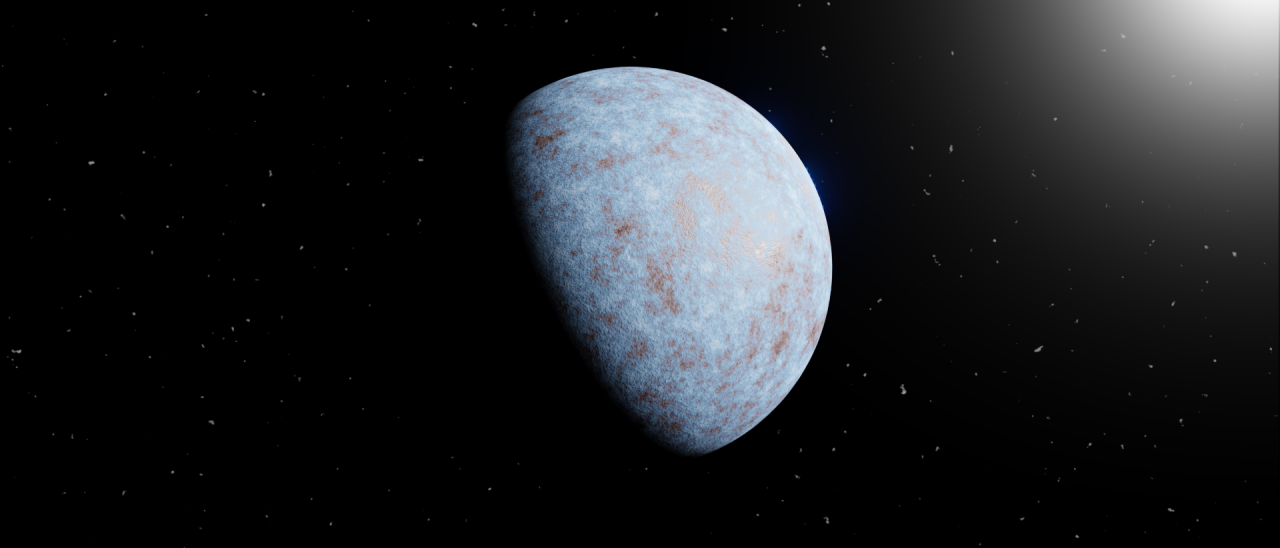An international team of researchers, with participation from the Instituto de Astrofísica de Canarias, has discovered an extremely dense Neptune-sized planet, which challenges the conventional theories about the formation and evolution of planets. It was first identified with NASA’s TESS satellite, and the present studies were made with the HARPS-N spectrograph on the Telescopio Nazionale Galileo (TNG), at the Roque de los Muchachos Observatory (Garafía, La Palma, Canary Islands). The results of the study have been published in the journal Nature.
It is called TOI-1853b and is really peculiar: it orbits its star in only 30 hours, and although its radius is similar to that of Neptune (3.5 times that of the Earth) its mass is some four times bigger than expected for this size (73 times the mass of the Earth) which makes it the densest Neptunian exoplanet observed, with nearly twice the density of the Earth.
TOI-1853b lies at a distance of 545 light years, towards the constellation Bootes, and is very close to its star, in a region normally classified as a “Neptune desert” in which there ought not to be any planets the size of Neptune, because of the intense radiation from the star. “If we rely on the theories of the formation and evolution of planets, we would not expect a planet to exist so close to its star” comments Luca Naponiello, a doctoral student at the University of Rome, Tor Vergta, who is the first author of the paper.
Its exact composition is not known. “It is a planet with a density too high to be a classical Neptunian type of planet, and we infer that it must be very rich in heavy elements” adds Naponiello. The research team are looking at two possibilities. One of them is that TOI-1853b may be mainly rocky, surrounded by a thin gassy atmosphere of hydrogen and helium. The other is that it might be composed partly of rock and partly of ice, so that given its high temperature, around 1200 degrees Celsius, this exoplanet might have an atmosphere of water vapour.
But the most challenging aspect for the research team is to find its possible origin, because none of the current theoretical models of planet formation predict that there could be a planet with these characteristics. Two possible scenarios for its formation have been proposed: in one of them it could have been produced by collisions between massive protoplanets, that is between planets which were in formation in that planetary system. These collisions might have eliminated the major part of the atmosphere of TOI-1853b, leaving its solid nucleus exposed, which would explain its high density within a moderate size.
Another possibility is that TOI-1853b might originally have been a gas giant similar to Jupiter, or even more massive, and could have taken a highly elliptical orbit due to interactions with other planets. This would have made it pass very close to its star, causing it to lose the outer layers of its atmosphere, and stabilizing its orbit at its current distance from the star.
“At the time being, we cannot distinguish which of these formation scenarios is more plausible, although we should not rule out that later theoretical studies based on this discovery might lead to new models for the formation of very massive Neptunes”, explains Enric Pallé, a researcher at the IAC who participated in the study.
TOI-1853b was first identified in 2020 as a planetary candidate with data from NASA’s TESS (Transiting Exoplanet Survey Satellite) which used the method of transits, which means observing the periodic dips in the light from a star caused by a planet in orbit round it when it crosses between us and the star. The confirmation that TOI-1853b is a planet, and the measurement of its mass and density were possible thanks to spectroscopic observations of the star’s radial velocity obtained by the team using the HARPS-N (High Accuracy Radial Velocity Planet Searcher for the Northern hemisferium) on the Telescopio Nazionale Galileo (TNG), at the Roque de los Muchachos Observatory, (La Palma, Canary Islands).
Article: Naponiello, L. et al: “A super-massive Neptune-sized planet”, Nature (2023). DOI: https://doi.org/10.1038/s41586-023-06499-2







